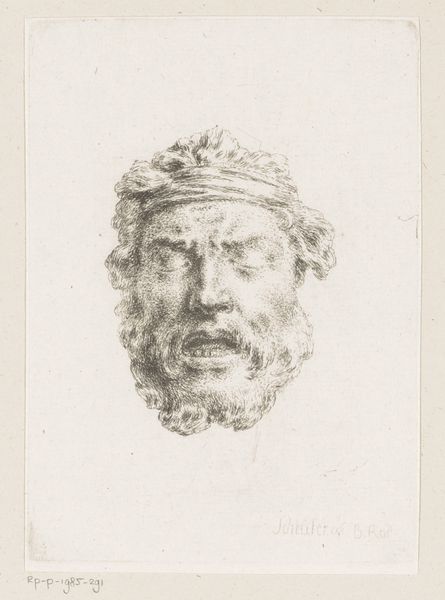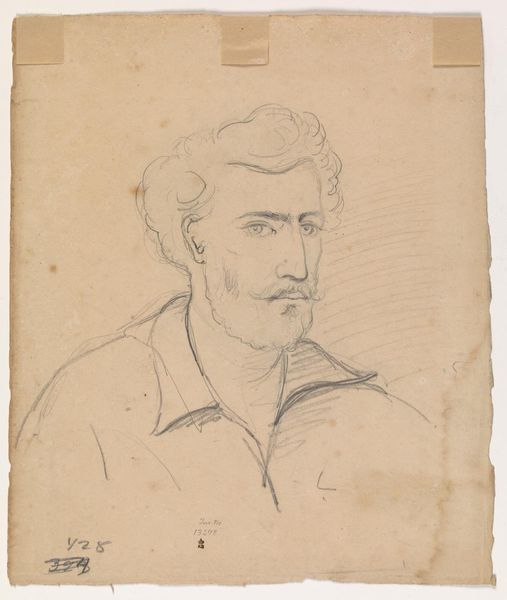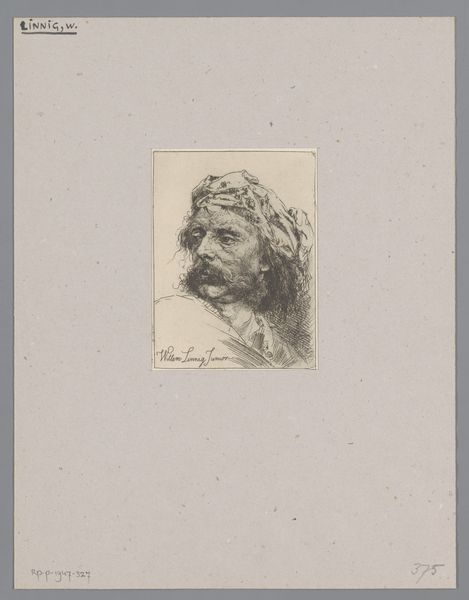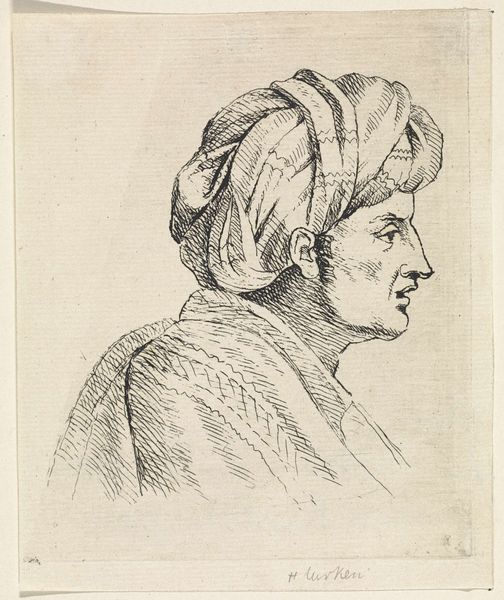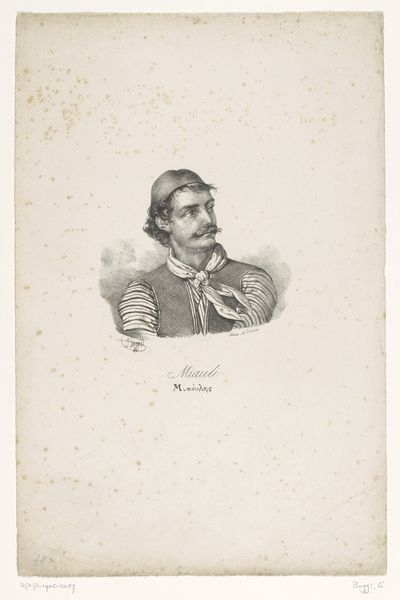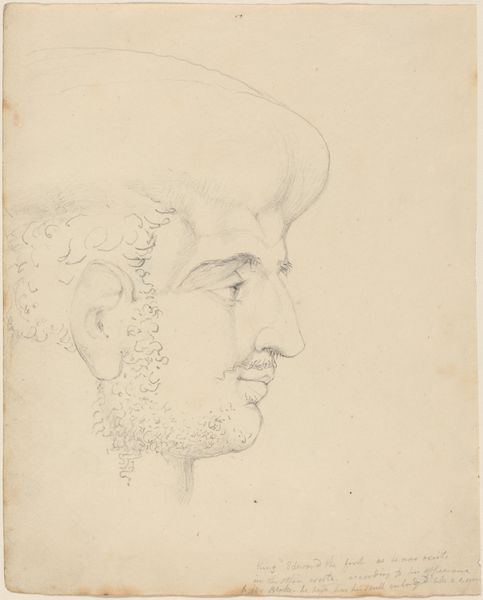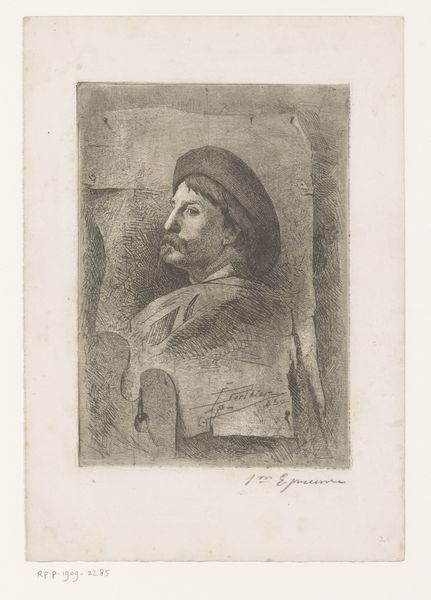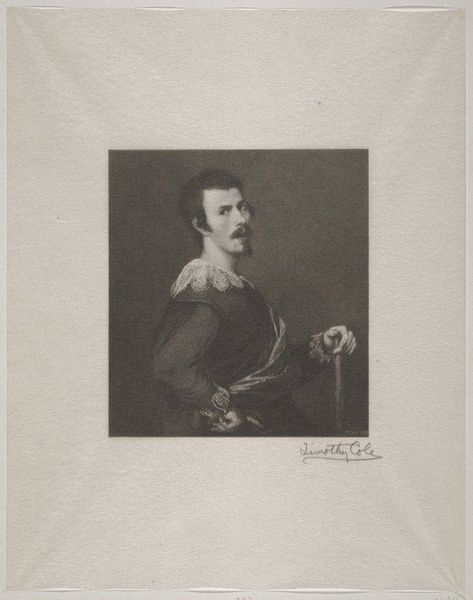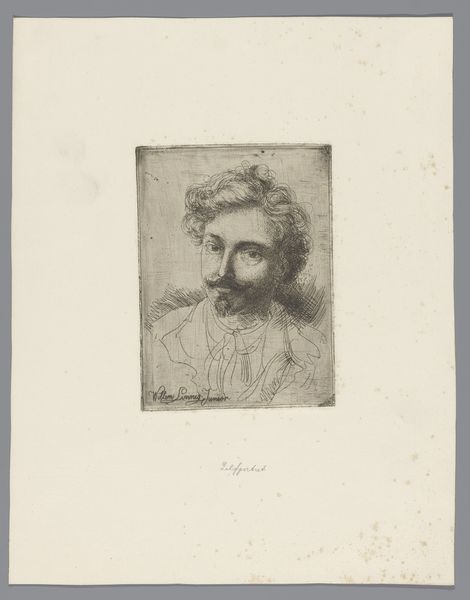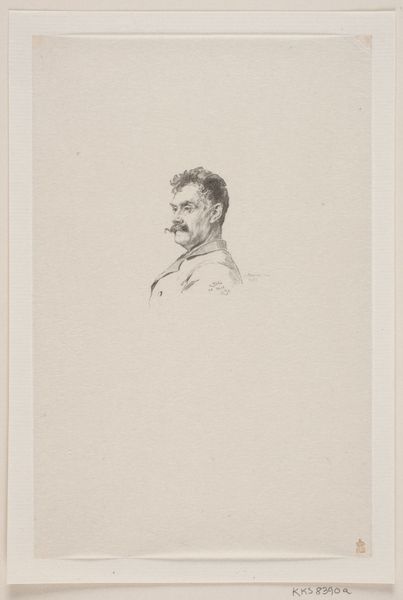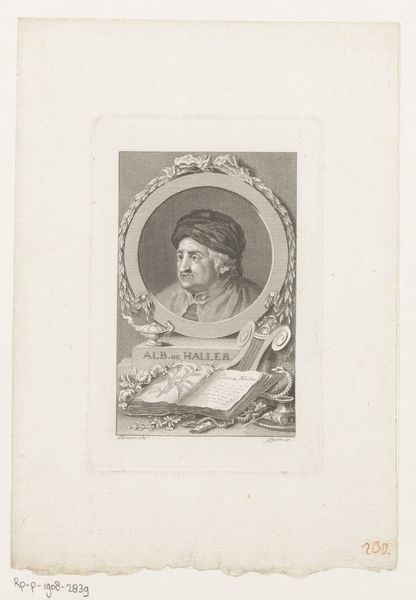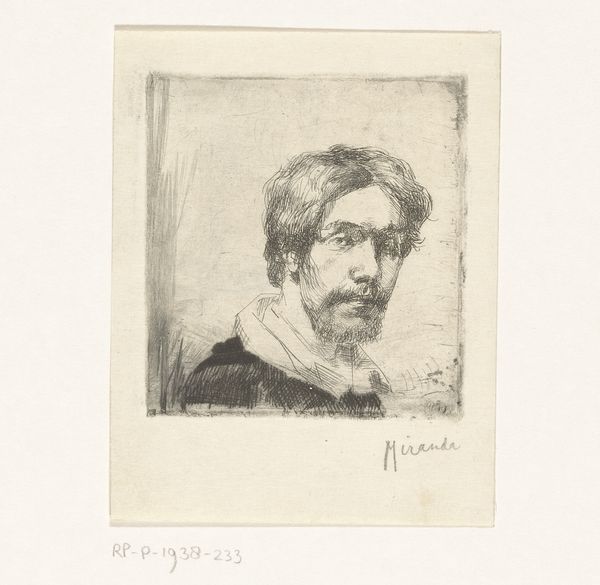
drawing, pencil
#
portrait
#
pencil drawn
#
drawing
#
caricature
#
figuration
#
pencil drawing
#
romanticism
#
pencil
#
portrait drawing
#
history-painting
Dimensions: height 500 mm, width 330 mm
Copyright: Rijks Museum: Open Domain
Editor: This is "Portret van een man met muts," or "Portrait of a Man with a Hat," by Henricus Franciscus Wiertz, created in 1847 using pencil. It's such a striking image, almost confrontational with the subject's intense gaze. What draws your eye when you look at this piece? Curator: Initially, I'm struck by the dynamism created through the artist’s deployment of line. Observe how the hatching technique articulates both the form and the textures—the soft rendering of the fur trim against the harder, more defined lines shaping the face. Note the semiotic weight of this contrast. Editor: Semiotic weight? Curator: Precisely. Consider how the juxtaposition of textures contributes to a visual dialogue. The softness of the hat suggests comfort or perhaps status, while the sharper lines around the eyes and mouth denote a sense of resolve, maybe even…disdain. The very tilt of the head lends itself to a narrative of power, wouldn’t you agree? How does the arrangement of these visual components impact your interpretation? Editor: I see what you mean about the visual dialogue – the textures and the tilt of the head create a very direct and somewhat arrogant persona. The slightly off-center composition also enhances the feeling of unease. Curator: An astute observation. The asymmetry unsettles the conventional portrait. This distortion enhances, rather than detracts from, the symbolic and structural essence of the piece. It disrupts a balanced reading and asks the viewer to actively engage with its nuances. Editor: I never thought about asymmetry like that. Seeing the portrait dissected into those formal elements helps me to appreciate Wiertz's intention on a deeper level. Curator: Indeed, considering the internal logic of the work’s form offers an entry point to understanding its profound artistic statement.
Comments
No comments
Be the first to comment and join the conversation on the ultimate creative platform.
